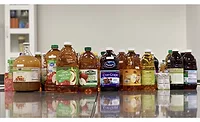Study Finds Concerning Levels of Toxic Heavy Metals in Dark Chocolate

Credit: Tetiana Bykovets (tetiana_bykovets) via Unsplash
Recent research suggests a concerning overall presence of toxic heavy metals cadmium and lead among dark chocolate bars.
Consumer Reports (CR) scientists recently measured the amount of heavy metals in 28 dark chocolate bars. Cadmium and lead were detected in all samples.
CR tested a mix of brands, including those that are small, such as Alter Eco and Mast, and more familiar brands, such as Dove and Ghirardelli. For 23 of the bars, eating just an ounce a day would put an adult over a level that public health authorities and CR’s experts say may be harmful for at least one of those heavy metals. Five of the bars were above those levels for both cadmium and lead. Chocolate bars that were high in lead, cadmium, or both came from brands such as: Beyond Good, Equal Exhange, Lindt, Scharffen Berger, Alter Eco, Pascha, Dove, Tony’s, Lily’s, Godiva, Chocolove, Lindt, Endangered Species, Trader Joe’s Hu, Hershey’s, Theo, and Green and Black’s.
However, while most of the chocolate bars in CR’s tests had concerning levels of lead, cadmium, or both, five of the samples were relatively low in both. CR states that this finding demonstrates the possibility of ensuring low amounts of heavy metals in dark chocolate. Chocolate bars that were identified as having low levels of lead and cadmium are: Mast Organic Dark Chocolate 80 Percent Cocoa, Taza Chocolate Organic Deliciously Dark Chocolate 70 Percent Cocoa, Ghirardelli Intense Dark Chocolate 86 Percent Cacao, Ghirardelli Intense Dark Chocolate Twilight Delight 72 Percent Cacao, and Valrhona Abinao Dark Chocolate 85 Percent Cacao.
Cocoa plants take up cadmium from soils through their roots and deposit the toxic element into the nibs of cocoa beans, while lead is introduced to cocoa from various sources including soil, dust, and deposition from power plants, and adheres to the shell of the cocoa bean. There are mitigation strategies for both of the toxic heavy metals, such as blending low and high cadmium beans for a lower-cadmium final product, and in the long term, changes to soil composition or cocoa genetics. For lead, experts recommend minimizing cocoa beans’ contact with soil and mitigating the potential for aerial deposition during the extraction and fermentation stages of the harvesting process, as well as optimizing decontamination processes during bean cleaning, roasting, and shell removal.
Looking for quick answers on food safety topics?
Try Ask FSM, our new smart AI search tool.
Ask FSM →









